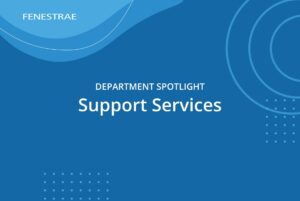
Many organizations have recently been considering making changes to their traditional fax implementation to take advantage of Fax over IP (FoIP). Making the decision to do so should be done after reviewing the benefits of such a move. So, what is FoIP, exactly? In essence, FoIP allows you to send and receive faxes using the internet. Because FoIP sends faxes over a data network instead of a telephone line, it can offer several advantages over traditional faxing, such as decreased maintenance and costs. In this blog post, we’ll discuss what FoIP is, its advantages over traditional faxing, and how to best leverage FoIP for your business.
Fax over IP – How does it Work?
FoIP is a relatively straightforward concept. Essentially, FoIP allows you to send and receive faxes using the internet instead of a telephone line. Fax over IP uses a standard protocol called T.38, which is designed to send and receive faxes over an IP network just like traditional analog faxing. Eliminating the need for standard phone lines using the T.30 protocol, the T.38 protocol acts as a gateway for fax traffic and encapsulates it into data packets for real time fax transmission over IP networks.
So, when set up correctly, FoIP can bring additional security and reliability to a fax implementation. But, just how easy is it to implement and what are the additional benefits associated with FoIP?
Why should businesses consider using Fax over IP?
FoIP’s technology can be easily implemented by companies of all sizes. In fact, small companies use it for the same reasons large companies do: to save time and money while improving efficiency. By allowing companies to leverage their existing network, the need to invest in additional hardware can be effectively mitigated. Further, using FoIP can reduce Telco costs while maintaining compatibility with traditional fax machines and printers, so businesses can still use their existing hardware. Additionally, with seamless integration of fax into a business’s unified communications (UC) system, users can send and receive faxes from their computer or mobile devices.
Cost Savings
There are a number of ways that FoIP can contribute to maximum cost savings. Perhaps the most apparent way, however, is how businesses can help their bottom line with reduced paper and hardware costs, and even eliminate costly telephone lines entirely.
Centralization and Ease of Management
By centralizing administration and making for more efficient use of TELCO, organizations save more money than they would using traditional fax. With this, companies can send and receive faxes from any of their locations, allowing for a single point of administration, security, monitoring and message archiving.
Increased Mobility for Businesses
Businesses can send faxes anytime, anywhere with FoIP. With a remote option for sending and receiving faxes, businesses are no longer tied to their desk or office location. This newfound freedom and flexibility helps businesses be more productive and nimble, while allowing you to access your information whenever, wherever.
Ease of Transition
As we’ve mentioned before, FoIP integrates with your company’s current systems, effectively eliminating the need for additional hardware. Aside from reducing the need to maintain and manage that additional hardware,, it also means there will be no impact on how faxes are received or sent.
Greater Compliance Overall
With FoIP, documents are digitally archived in a central location so that information is never lost and will never need to be physically stored. This is perfect for companies who need to maintain compliance with certain regulations such as GDPR.
Other benefits of FoIP include full virtualization of a company’s infrastructure, the ability to maximize use of the current IP Public Branch Exchange (PBX), and reduced energy costs. FoIP in and of itself offers unique advantages, but when used in combination with Voice over IP (VoIP), businesses can make the smooth transition to fully digitized communications.
FoIP & VoIP: The Perfect Partnership
Voice over IP or VoIP is quite similar to FoIP, and the two go hand in hand when it comes to business communication. And by converging FoIP and VoIP, businesses can take advantage of a whole host of features and benefits.
Just like FoIP, VoIP uses the internet to send and receive phone calls, effectively helping businesses to save on hardware costs associated with maintaining telephone lines. As a complementary technology to FoIP, businesses can transform their communications processes into a digital workflow, which will reduce operational costs while also increasing flexibility, productivity and mobility.
With faxing technologies like Fenestrae’s Faxination solution, businesses can maximize their VoIP while also benefiting from FoIP’s many advantages.
Why Cloud-Based Faxing with Fenestrae?
Faxination with Fenestrae upgrades existing fax systems while eliminating the costs associated with investing in additional hardware, software, and server maintenance. As an integrated cloud-based platform, Faxination works with popular applications such as Microsoft 365 making it a user-friendly FoIP solution. Reliable and secure, Faxination’s Cloud Fax can send and receive faxes remotely all while allowing you to maintain your current fax numbers.
Fenestrae’s products are used across a wide range of industries, including Financial, Healthcare, Legal Industries, as well as multiple government bodies. Fenestrae’s solutions allow for greater business agility and a lower TCO. With excellent customer care and a deep understanding of FoIP, Fenestrae is the perfect partner for your business’ faxing needs.
To learn more about how Fenestrae can help your business, visit our website at www.faxination.com or contact us today.








